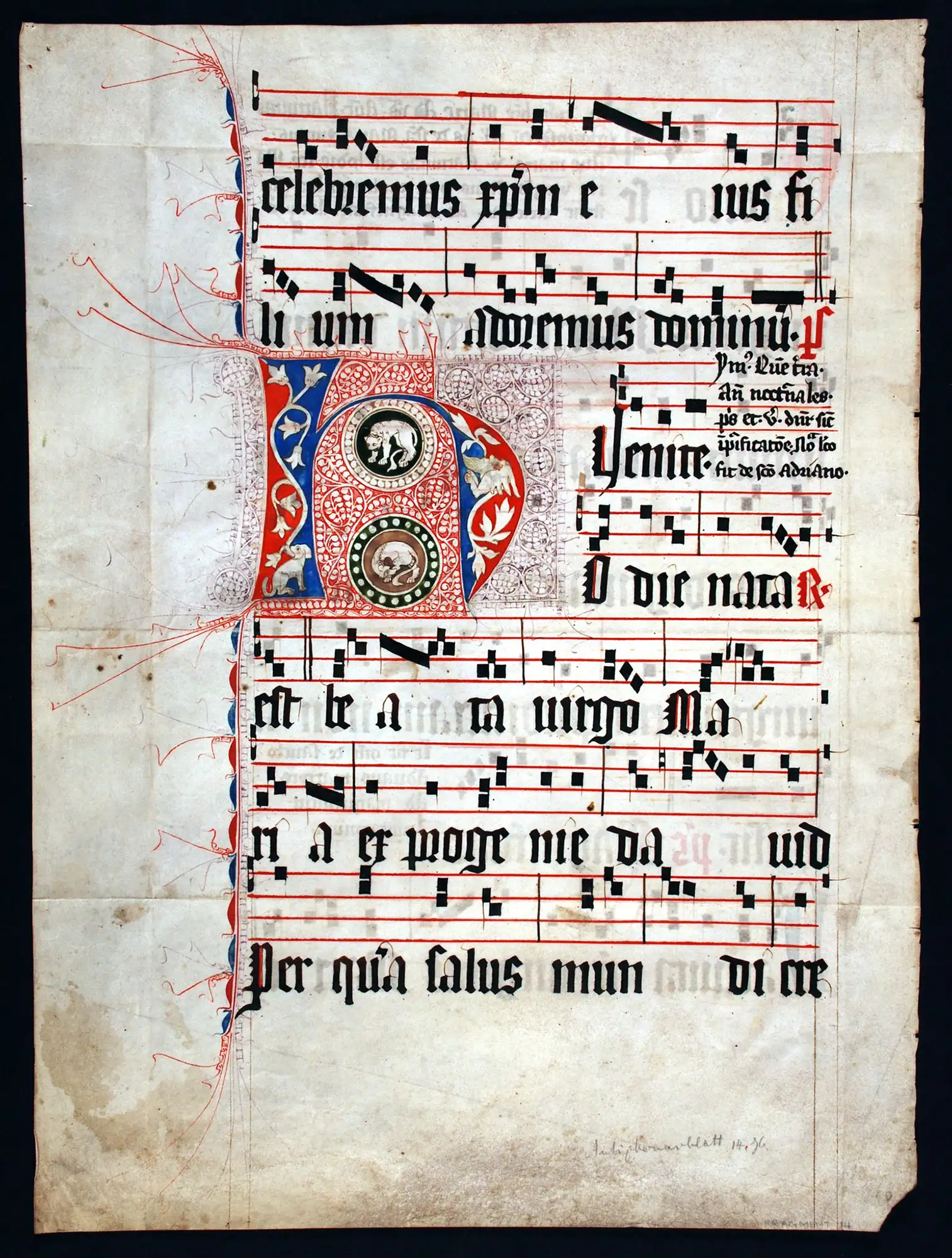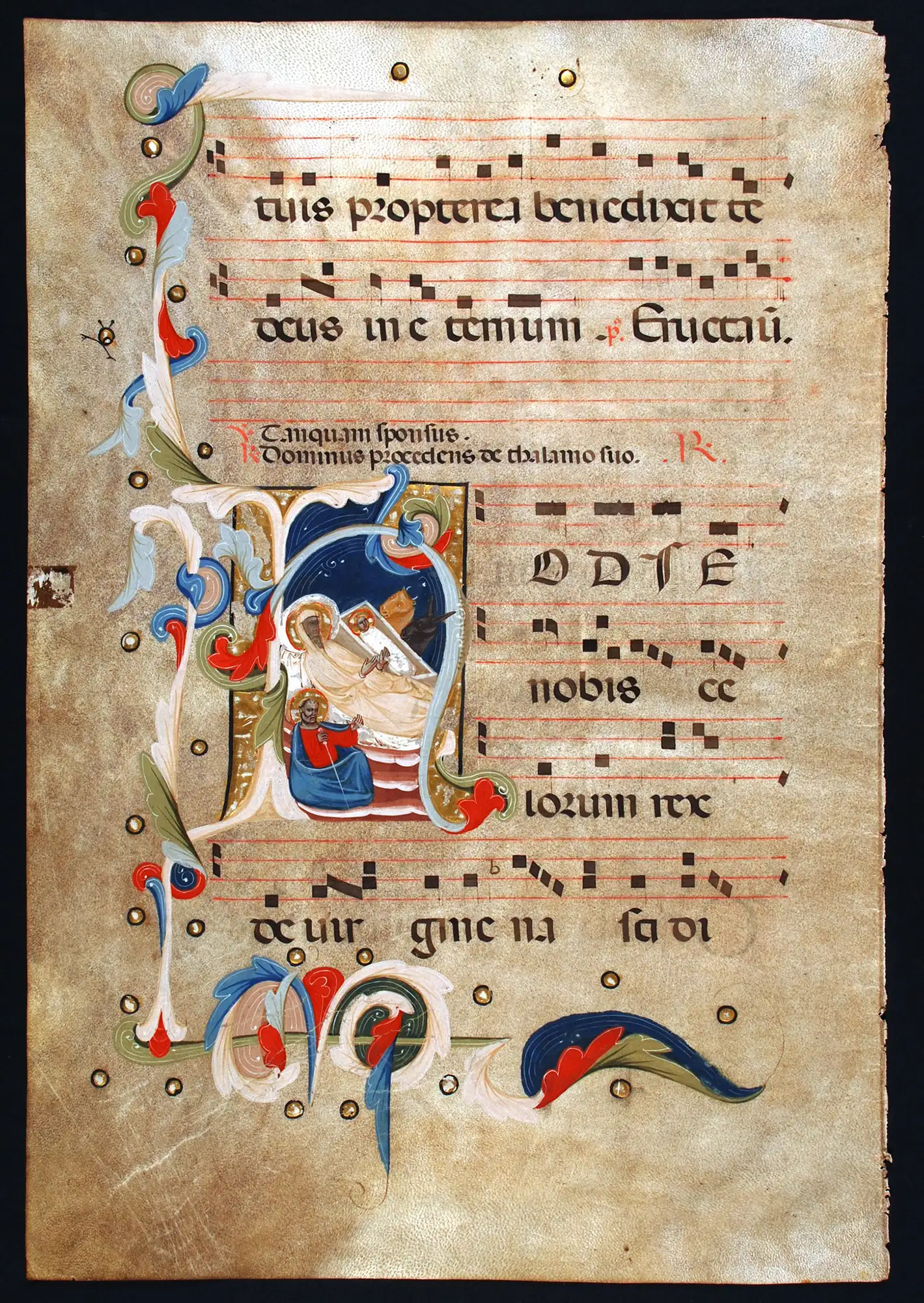Case 13

Single leaf from an Antiphonal, in Latin. Germany or Switzerland, ca. 1330. Reed MSF14.
Figures and small animals (often mythological or fantastical) are sometimes used in the decoration of initials. The large “h” in this music manuscript includes a dog and a winged “grotesque” within the minims of the initial. The round part of the initial has been filled with tracery, and two roundels containing a bear cub and a dog biting its own leg.
The text is from the Sanctoral, comprising part of First Vespers and Matins for the Nativity of the Virgin (8 September).

Single leaf from an Antiphonal, in Latin. Northern Italy (perhaps Bologna), early fourteenth century. Reed MSF18.
It is a small step from geometric designs, animals or foliage to incorporating a miniature painting within the initial. The text of this Italian manuscript is from the Christmas service; hence a nativity scene has been painted into the round part of the “h” of “hodie”. The text reads Hodie nobis celorum rex de virgine nasco di … (“Today the king of heaven is born of a virgin”). Initials that include small paintings are technically known as “historiated initials”.
This leaf is from an Antiphonal which was probably part of a series of choir books commissioned in Northern Italy in the early fourteenth century.

Single leaf from an Antiphonal, in Latin. Northern Italy (perhaps Bologna), early fourteenth century. Reed MSF18.
Open image in new window

